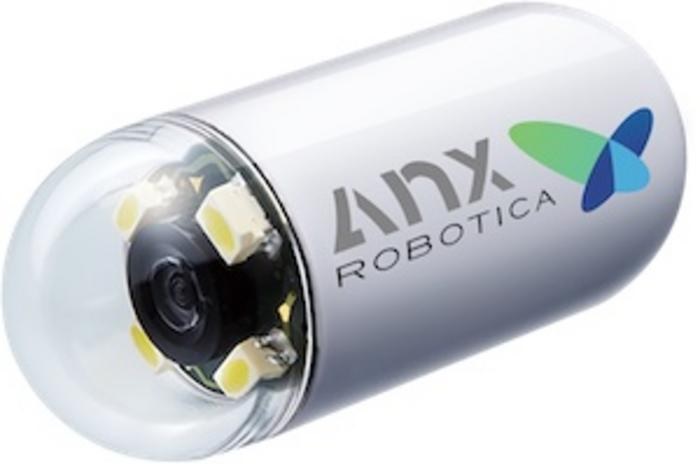
While endoscopes with ingestible video capsules have been around for many years, the capsules have been limited by the fact that they could not be controlled by doctors. They moved passively , propelled solely by gravity and the body’s natural movement. Now, according to a pioneering research study at George Washington University, doctors can remotely drive a miniature video capsule to all regions of the stomach to visualize and photograph potential problem areas. The new technology uses an external magnet and handheld video game-style joysticks to move the capsule in three dimensions in the stomach. This new technology comes closer to the capabilities of a traditional tube-based endoscopy.
“A traditional endoscopy is an invasive procedure for patients, not to mention expensive due to the need for anesthesia and downtime,” said Andrew Meltzer, professor of Emergency Medicine at the GW School of Medicine and Health Sciences. "If larger studies can show that this method is sensitive enough to detect high-risk lesions, magnetically controlled capsules could be used as a quick and easy way to detect health problems in the upper gastrointestinal tract, such as ulcers or stomach cancer. ".
More than 7 million traditional endoscopies of the stomach and upper intestine are performed each year in the United States to help doctors investigate and treat stomach pain, nausea, bleeding, and other disease symptoms, including cancer. Despite the benefits of traditional endoscopies, studies suggest that some patients have trouble accessing the procedure.
In fact, Meltzer became interested in magnetically controlled capsule endoscopy after seeing patients in the emergency room with stomach pain or suspected upper GI bleeding who faced barriers to obtaining a traditional outpatient endoscopy.
“I had patients come to the emergency room worried about a bleeding ulcer, and even if they were clinically stable, I had no way to evaluate them without admitting them to the hospital for an endoscopy. We were unable to do an endoscopy in the emergency room and many patients faced unacceptable barriers to having an outpatient endoscopy, a crucial diagnostic tool to prevent life-threatening hemorrhage,” Meltzer said. “To help address this issue, I began looking for less invasive ways to visualize the upper gastrointestinal tract for patients with suspected internal bleeding.”
The study is the first to test magnetically controlled capsule endoscopy in the United States. For patients who come to the emergency room or doctor’s office with severe stomach pain, the ability to swallow a capsule and get a diagnosis on the spot, without a second appointment for a traditional endoscopy, is a real plus, not to mention the possibility of life. savings, says Meltzer. An external magnet allows the capsule to be guided painlessly to visualize all anatomical areas of the stomach and to video and photograph any possible bleeding, inflammation or malignant lesions.
While using the joystick requires time and additional training, software is being developed that will use artificial intelligence to drive the capsule itself to all parts of the stomach with the push of a button and record any potential risk abnormalities. That would make it easier to use the system as a diagnostic tool or screening test. Additionally, the videos can easily be transmitted for off-site review if there is no gastroenterologist on site to read the images.
Meltzer and colleagues conducted a study of 40 patients in a medical office building using the magnetically controlled capsule endoscopy. They found that the doctor could direct the capsule to all major parts of the stomach with a 95 percent visualization rate. The capsules were pushed by the emergency physician and the study reports were then reviewed by an attending gastroenterologist who was physically off-site.
To see how the new method compares to a traditional endoscopy, study participants also received a follow-up endoscopy. No high-risk lesions were missed with the new method, and 80 percent of patients preferred the capsule method to traditional endoscopy. The team found no safety issues associated with the new method.
However, Meltzer cautions that the study is a pilot and a much larger trial needs to be done with more patients to make sure the method does not miss important lesions and can be used instead of endoscopy. A major limitation of the capsule includes the inability to biopsy the lesions that are detected.
Medical technology company AnX Robotica funded the research and is the creator of the capsule endoscopy system used in the study, called NaviCam®.
Reference : Magnetically controlled capsule for assessment of the gastric mucosa in symptomatic patients: a prospective, single-arm, single-center, comparative study. iGIE DOI: https://doi.org/10.1016/j.igie.2023.04.007















